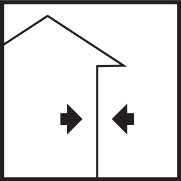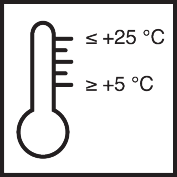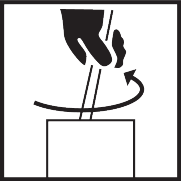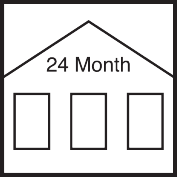Article No. 769001
Weather-resistant, matt oil for terraces and garden furniture

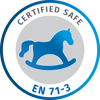
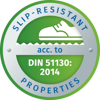

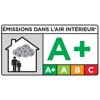
Product specifications
On delivery
The stated values represent typical product characteristics and are not to be construed as binding product specifications.
Field of application
- For use on interior and exterior wood
- Building elements with no or limited dimensional stability
- Pigmented variants: interior and exterior wood
Clear variant: interior wood & wood in sheltered outdoor areas - (Garden) furniture and wooden decking
- Wood types including teak, bangkirai, larch, Douglas fir and Accoya
- Wooden beehives, bee boxes and other wooden elements used in beekeeping
- Not suitable for massaranduba or tabebuia: we recommend the use of Remmers Maintenance Oil for these species of wood
- Please get in touch with the Remmers Technical Service team before using on other, exotic species of wood not named here
- We recommend the use of WPC Impregnation Oil on WPC, bamboo and Resysta
Properties
- Bee-friendly formula
- Water-based with a very low solvent content
- More ecological and sustainable than conventional products thanks to the use of bio-based binders
- Slip-resistant
- Weather-resistant and UV-resistant
- Improved UV protection thanks to intensive colour shades
- Intense colours for a uniform colour finish
- Classified as non-spontaneously combustible according to EPH test report*
-
Preparation
-
Substrate requirements
Wood building elements with limited or no dimensional stability: wood moisture content max. 18%
-
Preparations
Sand planed wood surfaces carefully before applying the first coat in order to ensure good adhesion. Remove all sanding dust.
Wood which is rich in active substances should be weathered for a few weeks or cleaned with Wood Cleaner before being treated for the first time in order to prevent delays in the drying process.
Use an agent such as Wood Cleaner to remove any dirt, grease and old coatings that could form a film, making sure not to leave any residue.
Clean any greyed wood surfaces with Wood Revitalizer.
Remove algae with Green Growth Remover*. (*Use biocides safely. Always read the label and product information before use.)
In order to avoid the use of wood preservatives as far as possible, the construction should be designed to be water-repellent (avoid horizontal surfaces, open end-grain wood, capillary joints, water and moisture accumulation points, contact with splash water, sharp edges). Pre-treatment with Wood Impregnation [eco] improves the hydrophobic effect.
Exterior wood that needs to be protected against soft rot and blue stain must be pre-treated with a suitable wood preservative* (*Use biocides safely. Always read the label and product information before use).
-
-
Application
-
Stir well.
Apply by brush.
Treat all sides (of decking) on the first coat if possible.
Apply the product using a paintbrush with synthetic bristles or a flat brush (synthetic bristles) in the direction of the grain.
Remove or smooth out any excess material (especially in tongues and grooves) immediately.
Apply a further coat if required.
Seal opened containers well and use contents as soon as possible.
-
Application instructions
-
Check colour, adhesion and compatibility with the substrate by setting up a trial area.
Before coating technically modified woods and wood-based materials, apply the product to a trial surface and conduct a suitability test on the desired area of use.
Although the various colours are matched to a specific type of wood, they can easily be used on other types of wood as well, in which case the look of the colour will differ from the corresponding sample.
The clear variant does not protect against UV radiation (greying) and should therefore be used only on wood elements not directly exposed to weather (i.e. protected against direct sunlight, precipitation and wind). If a clear coating is desired on a directly exposed exterior surface, apply several coats and refresh at regular intervals.
Rainfall may cause water soluble substances to bleed from wood that is rich in such substances, e.g. oak, red cedar, afzelia, redwood, etc. This may lead to the discolouration of light-coloured masonry or render.
Cut end-grain surfaces at the bottom to create a water-drip edge.
Apply two subsequent coats of end-grain wood preservative to end-grain wood and cut surfaces in order to protect them against moisture.
Regular reapplications are required in areas exposed to weathering.
It should be noted that the tests carried out by EPH could not take into account all possible scenarios that might occur in practice. For example, contact of objects and media contaminated with this product, such as rags or dust, with other highly flammable agents, such as dust containing cellulose nitrate or certain solvents, could lead to conditions that result in ignition.
The product should not be applied at the same work stand as NC-based varnishes or stains. Collect any textiles soiled with the product (e.g. cleaning rags, work clothing) in fire-resistant waste containers and dispose of properly.
-
Drying
Practice values at +20 °C and 65% relative humidity.
Low temperatures, poor ventilation and high humidity delay drying.
Drying may take longer depending on the type of wood, e.g. oak, due to substances it contains.
-
Working tools / cleaning
-
Paintbrush with synthetic bristles, flat brush (synthetic bristles), automatic brush coater
Clean tools immediately after use with water and detergent.
Ensure that any residue from cleaning is disposed of correctly.
-
Storage / shelf life
-
If stored unopened in its original container in a cool, dry place and protected against frost, the product will keep for at least 24 months.
Use the contents of open containers as quickly as possible.
-
Usage
-
Approx. 60 ml/m² per coat
Higher application rate on rough and grooved wood.
Application quantity depends on the absorbency of the substrate.
Determine the precise quantity by applying to a test area.
Max. 2 coats, apply thinly by brush. One coat is sufficient for top-ups.
Remove or smooth over any excess material immediately (especially in notches and grooves).
-
General information
-
DIN EN 71-3 "Migration of certain elements":
This product complies with the limits for the migration of heavy metals to children's toys according to DIN EN 71-3 and thus fulfils one of several further requirements for the safety of children's toys according to the EU "Toy Directive" (2009/48/EC).Brush surfaces thoroughly and do not use any high-pressure water jet equipment or aggressive cleaning agents.
When coating technically modified woods and wood-based materials, the surface properties of the product may differ from those of natural woods. Before coating, a trial application and a suitability test must be carried out to check compatibility, adhesion, reaction to weathering and colour tone. Under certain circumstances, different maintenance intervals may apply. Please also take particular note of the specific instructions for surface treatment from the respective manufacturer. If you have any further questions, please contact Remmers Technical Service.
Please observe the “Care Instructions for Wooden Garden Furniture”.
On planed larch and softwoods with a high resin content, the coating may have reduced adhesion and resistance to weathering. This is especially the case on horizontal year rings, knots and areas of winter growth that are high in resin. Maintenance must be carried out more frequently on these surfaces.
The only remedy for this is pre-weathering or very coarse sanding (P80).
If these wood types are rough-sawn, considerably longer maintenance intervals are to be expected.On terrace surfaces in the area of swimming pools, the increased exposure to chlorine, cleaning agents and intensive moisture can lead to reduced adhesion and weathering of the coating. Shorter maintenance and renovation intervals must be expected here.
-
-
Disposal instructions
-
Larger quantities of leftover product should be disposed of in the original containers in accordance with the applicable regulations. Completely empty, clean containers should be recycled. Do not dispose of together with household waste. Do not allow to enter the sewage system. Do not empty into drains.
-
-
Safety / regulations
-
For further information on the safety aspects of transporting, storing and handling the product and on disposal and environmental matters, please see the current Safety Data Sheet.
-






